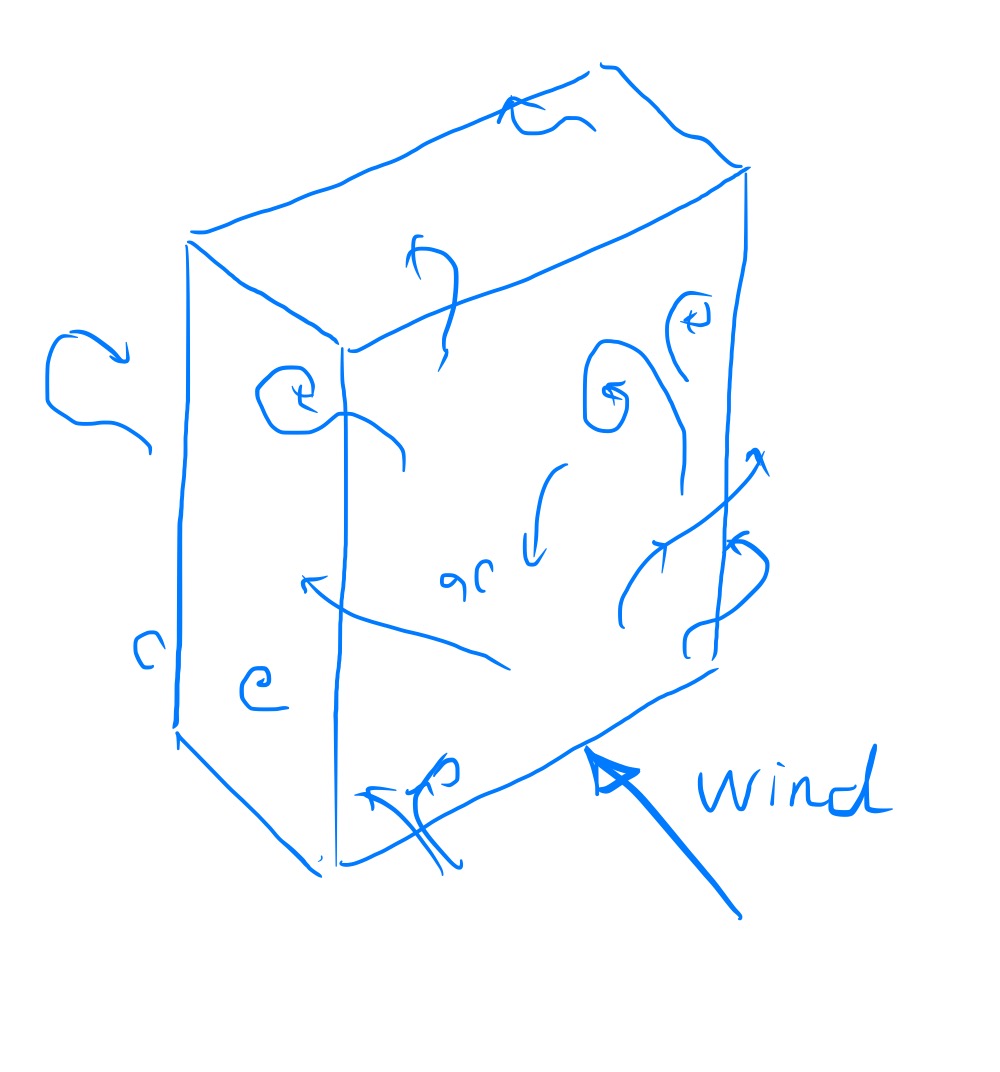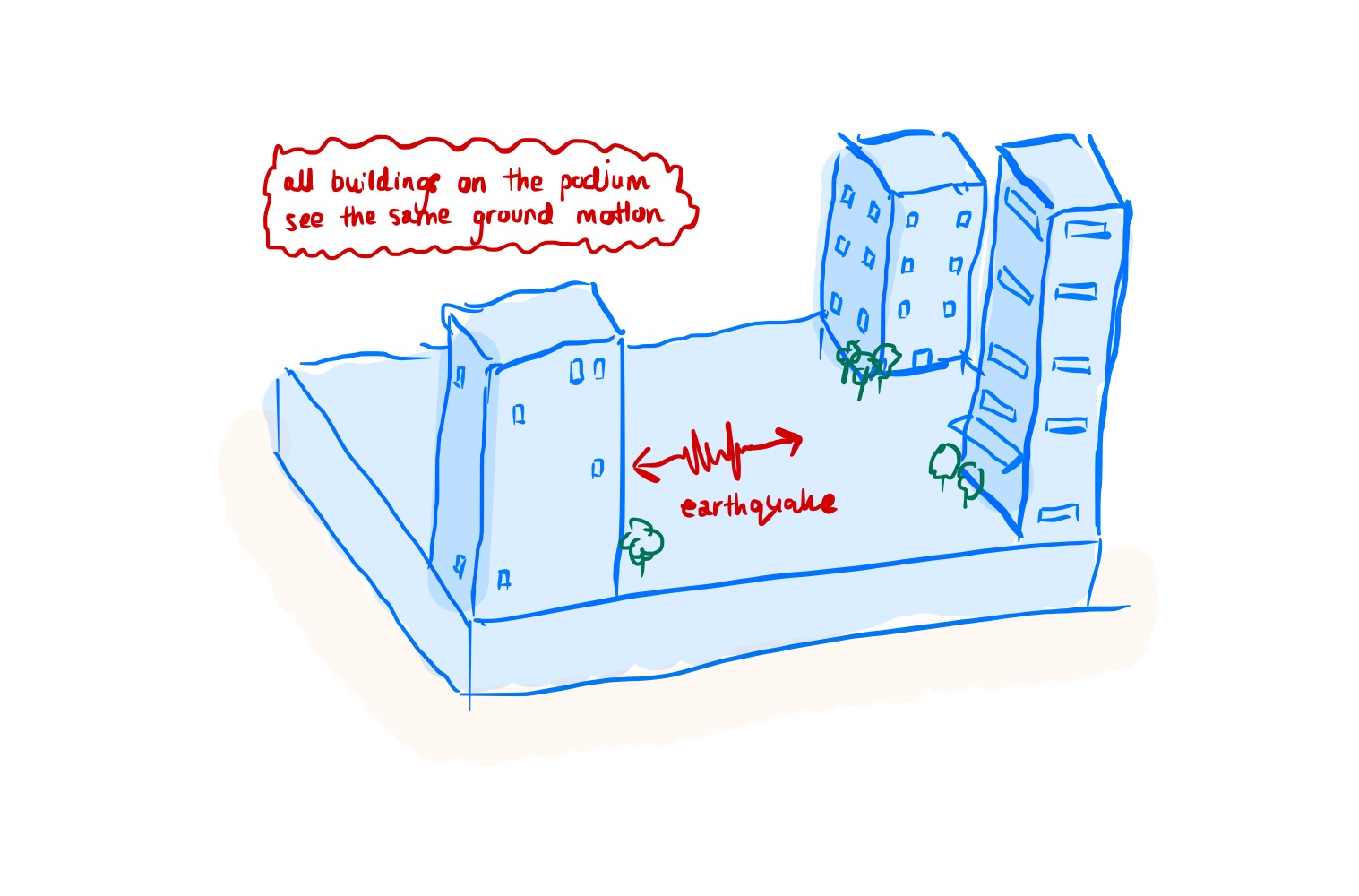Wind and seismic forces are both types of random time-varying loads that act on a structure. However, what are the key differences which distinguish them? This article attempts to explain this and how it affects the treatment of these loads for structural analysis.
Fundamental Difference
First, we should explain that although both loading types are considered as random: wind forces are traditionally considered as stationary random, whereas seismic loads are considered to be non-stationary random.
In simple terms, stationary means that the wind forces can be characterised as having a mean value and a standard deviation. For seismic forces, non-stationary implies that no mean or standard deviation can be reasonably defined for the time history. Random just means that the instanteneous values vary significantly over time.
For non-synoptic winds, the time history of the recorded Wind Speeds may be non-stationary. For example, gust fronts generated by thunderstorm downbursts last only a few minutes, and their time-histories may resemble earthquake ground motion.
The significance of the above nature of wind and seismic loading means that seismic actions produce only dynamic (inertial loads) which depend on the building mass and dynamic characteristics (e.g. natural periods, mode shapes).
However, wind actions will have a mean and fluctuating component. The fluctuating component can be further broken down into (i) background; and (ii) an inertial components. The mean and background components are a function of the incoming wind and building shape and height. Only the inertial (dynamic) component will depend on the building dynamic characteristics and mass. For short rigid buildings, this inertial component is negligible, but for tall buildings (especially those with vortex shedding issues), the inertial component becomes very significant.
Dynamic Loading
Both wind and seismic loads can impose dynamic loads (i.e. inertial loads) on the structure.
However, the magnitude of the dynamic loads depends on the vibration periods (or natural frequencies) of the structure. Taller buildings generally have low frequencies of vibration which fall within the wind turbulence spectrum range of frequencies. On the other hand, earthquakes tend to pose significant dynamic loads for low-rise buildings whose frequencies of vibration are much higher (longer period of vibration).

Due to these frequency characteristics, seismic loads generally govern the design of low- to mid-rise buildings whereas wind loads typically govern the design of tall and super-tall buildings.
Correlation
The magnitude of wind loads on a building depend on its size and shape. Strong wind gusts do not occur everywhere at the same time on a single surface, instead they are partially correlated with respect to time. The larger the surface area, the weaker the correlation between the strong gusts.
The windward and leeward gusts also have a partial correlation. The longer the building (in the direction of the wind), the poorer the correlation between the windward face pressures and leeward face pressures (and vice versa).

For seismic loading, the ground motion is deemed to be fully correlated even for a building with a significantly large footprint.

Damping
Severe wind loads do not have nearly the same "power" as severe seismic loads. The latter tends to produce larger building motions and therefore more energy dissipation. Typical structural damping ratios are presented below:
Wind: 1.0% to 2.0% of critical
Criteria
There is usually different criteria for seismic and wind loading. Some typical values are presented below. These are given for reference only. For actual values, refer to the relevant code.
| Criteria | Wind | Seismic |
| Interstorey Drift | 1/300 | 1/250 |
| Peak Horizontal Building Deflection | 1/500 | 1/300 |
| Peak Acceleration (※) | Residential: 10-15 milli-g Office: 20-25 milli-g | - |
※ peak acceleration criteria are presented for the 10-year return period for wind
The more relaxed criteria for wind loading reflects the fact that buildings are mostly designed to remain elastic even under significantly high wind loads. Seismic criteria may be much more strict depending on the level of earthquake considered.
Other
Wind loading very rarely leads to structural collapse of buildings. Seismic loading is usually a bigger concern and typically governs the design of most buildings in moderate- to high seismic regions.